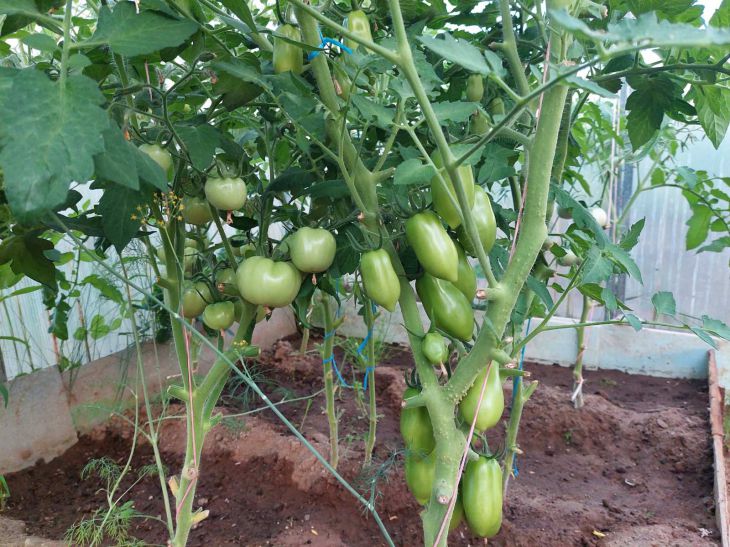Tomatoes are one of the most popular and delicious vegetables that you can grow in your garden.
However, in order to get a good and high-quality harvest, you need to know some secrets and techniques for caring for this crop.
In this article, we will share with you 8 tips that will help you double your tomato harvest.
Find a suitable place for tomatoes
Tomatoes prefer warmth and sun, so they should be planted in a bed facing east to west.
In addition, it is better to grow tomatoes in a greenhouse or under film - this way they will heat up more during the day and cool down less at night.

Feed your tomatoes regularly and correctly
Tomatoes need nutrients for growth and development, especially nitrogen, phosphorus and potassium. Fertilizers should be applied every two weeks from April to August, alternating mineral and organic fertilizers.
Mineral fertilizers can be used ready-made complex products for tomatoes, for example, "Fertile Watering Can", "Agricola-Aqua", "Pokon", etc. Organic fertilizers can be prepared independently from bird droppings, ash, yeast or mullein.
Strengthen the root system of tomatoes
Tomato roots are responsible for absorbing water and nutrients from the soil, so they need to be kept in good condition.
To do this, you can hill up the plants several times per season to promote the formation of additional roots on the stem. You can also add root strengthening agents to the soil, such as "Gumisol-N", "Kornerost" or "Zircon". These preparations stimulate the growth and development of roots, increase their resistance to drought and over-watering.
Remove the lower leaves and side shoots of tomatoes
The lower leaves of tomatoes do not participate in photosynthesis and shade the soil, promoting the development of fungal diseases. Therefore, they should be cut off when the plant reaches a height of 60 cm.
Side shoots are shoots that grow between the main stem and the side branches. They take away strength and nutrients from the plant, reducing the yield. Therefore, they need to be pinched as soon as they reach a length of 5-10 cm.
Mulch the soil around the tomatoes
Mulching is the process of covering the soil with organic material, such as straw, sawdust, grass, or leaves. Mulch helps retain moisture in the soil, prevent weeds from growing, maintain soil temperature, and protect plants from disease. Mulching should be done after watering or rain, when the soil is well moistened.
Remove excess flowers and tomato ovaries
To improve the quality and size of the fruit, you can limit the number of flowers and ovaries on each bush. To do this, you need to leave no more than 4-5 flowers on each branch and pick the rest.
You can also remove some of the ovaries on the upper brushes if they are too small or deformed.
Water your tomatoes correctly and on time
Tomatoes love regular and abundant watering, but they do not tolerate stagnant water in the soil. Tomatoes should be watered at the root, avoiding water getting on the leaves and fruits.
It is best to water tomatoes early in the morning or in the evening, when the sun is not so bright. The frequency of watering depends on the weather and soil condition, but on average, tomatoes should be watered once every 3-4 days. After watering, it is advisable to loosen the soil to improve its air permeability.
Protect tomatoes from pests and diseases
Tomatoes are susceptible to attacks by various insects, such as aphids, Colorado beetles, mole crickets, woodlice, etc. To combat them, you can use both chemical and biological agents.
For example, a solution of soap or garlic works well against aphids, an infusion of wormwood or tobacco against the Colorado potato beetle, and traps made from jars with pieces of potatoes or meat against mole crickets. You can also attract beneficial predatory insects, such as ladybugs or lacewings, which feed on pests.
Tomatoes also suffer from various diseases, especially fungal ones, such as late blight, alternaria, powdery mildew, etc. To prevent diseases, you need to follow the rules for planting and caring for tomatoes, as well as treat the plants with fungicides or folk remedies. For example, you can use a solution of potassium permanganate or copper sulfate against late blight, a solution of soda or sulfur against alternaria, and a solution of iodine or vinegar against powdery mildew.
These were eight tips that will help you double your tomato harvest.
Remember that tomatoes are demanding and grateful plants that respond to your care and love.
Follow the rules of agricultural technology, feed and water tomatoes in a timely and correct manner, protect them from pests and diseases - and you will get a bountiful harvest of tasty and healthy fruits.








